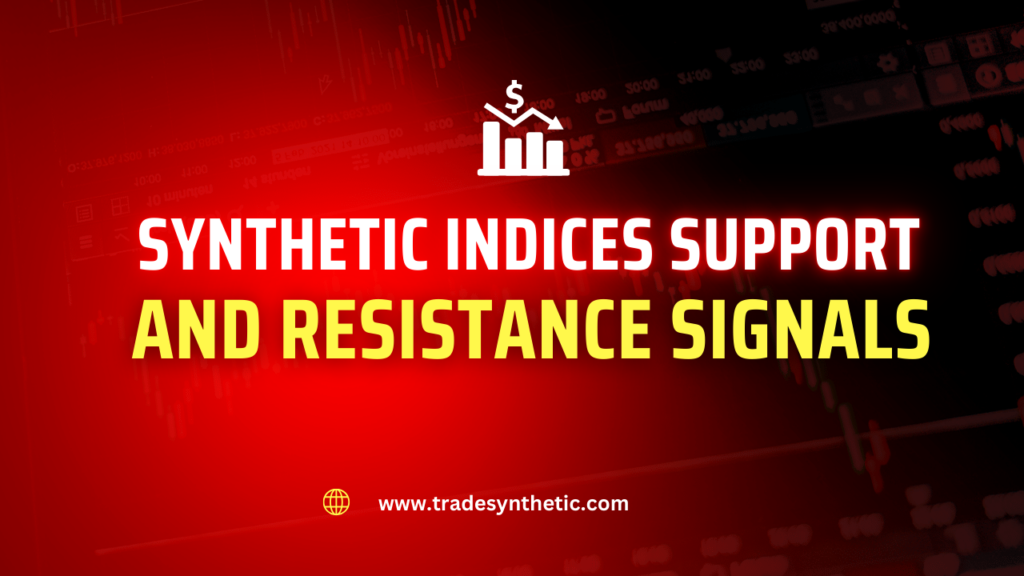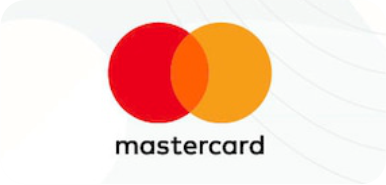One major concept in trading Synthetic indices is understanding support and resistance signals. Since trading synthetic indices has become a popular way to earn money by predicting market movements, traders use this method to determine the best times to buy or sell by identifying specific price levels where the market tends to stop or reverse.
Let us consider what synthetic indices support and resistance signals are, why they are important, and how to use them effectively.
What Are Support and Resistance Signals?
Support and resistance are key levels on a price chart that indicate where the price of an asset has a high chance of stopping or reversing.
In synthetic indices trading, these signals are necessary tools for identifying patterns and planning your trades. For instance, if the price of an index approaches a support level, you might consider buying because the price could rise. Similarly, if it nears a resistance level, you might consider selling because the price could fall.
- Support: This is a price level where the market stops falling and often starts rising. It acts like a floor, preventing the price from going lower.
- Resistance: This is a price level where the market stops rising and often starts falling. It acts like a ceiling, preventing the price from going higher.
Why Are Support and Resistance Important in Synthetic Indices Trading?
1. They Show Market Trends
Support and resistance levels help traders identify whether the market is in an uptrend, downtrend, or sideways trend.
- In an uptrend, support levels keep increasing, and resistance levels keep breaking.
- In a downtrend, resistance levels lower continuously, and support levels break.
2. They Provide Entry and Exit Points
Knowing support and resistance levels helps you decide when to enter or exit a trade.
- Buy near a support level when the price shows signs of bouncing upward.
- Sell near a resistance level when the price shows signs of reversing downward.
3. They Help with Risk Management
By setting stop-loss orders slightly below support levels or above resistance levels, you can limit potential losses if the trade doesn’t go as planned.
4. They Work Well in Synthetic Indices
Synthetic indices are designed to simulate real market behavior, and support and resistance levels are highly effective tools in these markets.
How to Identify Support and Resistance Signals
1. Look for Price Bounces
Observe where the price has consistently stopped falling (support) or stopped rising (resistance). These are key levels to watch.
2. Use Trendlines
Draw diagonal lines connecting consecutive highs (for resistance) or lows (for support). These trendlines can indicate the overall market direction.
3. Use Horizontal Lines
Mark price levels where the market has reversed multiple times. These are strong support or resistance zones.
4. Rely on Indicators
Technical tools like Fibonacci Retracements, Moving Averages, and Bollinger Bands can help identify support and resistance levels automatically.
5. Monitor Volume
High trading volume near support or resistance levels confirms their strength. If the market reacts strongly at these levels, they are likely to hold in the future.
6. Test Multiple Timeframes
Analyze support and resistance on different timeframes (e.g., 1-hour, 4-hour, daily charts). Levels visible on higher timeframes are usually stronger.
How to Use Support and Resistance Signals in Your Trades
1. Plan Trades Around Key Levels
Always ensure you buy when the price approaches a support level and shows signs of reversing upward and sell when the price nears a resistance level and shows signs of reversing downward.
2. Combine Signals with Indicators
Use tools like Relative Strength Index (RSI) or Moving Average Convergence Divergence (MACD) to confirm whether the price will bounce off or break through support and resistance levels.
3. Watch for Breakouts
When the price breaks through a support or resistance level, it often indicates a strong trend. Trade in the direction of the breakout (e.g., buy if the price breaks resistance).
4. Use Stop-Loss and Take-Profit Levels
Place stop-loss orders slightly below support levels (for buys) or above resistance levels (for sells) to limit your risks. Set take-profit levels near the opposite level to lock in gains.
5. Adjust Levels Regularly
Market conditions change, so it’s important to update your support and resistance levels based on the latest price action.
Common Mistakes to Avoid When Using Support and Resistance Signals
1. Ignoring Overall Market Trends
Support and resistance levels are more reliable when used in the context of the overall market trend. Trading against the trend can lead to losses.
2. Overcomplicating Charts
Avoid marking too many levels on your chart. Focus on the most significant support and resistance zones to avoid confusion.
3. Misplacing Stop-Loss Orders
Placing stop-loss orders too close to support or resistance can result in premature losses due to minor price fluctuations.
4. Trading Without Confirmation
Don’t rely solely on support and resistance signals. Combine them with other indicators or patterns for better accuracy.
5. Failing to Adapt
Market behavior can change. Be flexible and adjust your strategy as needed.
Tips for Mastering Support and Resistance Signals
1. Practice on a Demo Account
Before using real money, practice identifying and trading support and resistance signals on a demo account.
2. Learn Price Action
Understand candlestick patterns and price movements near support and resistance levels. Patterns like Doji, Hammer, and Engulfing Bars can provide additional insights.
3. Use Alerts
Set price alerts on your trading platform to get notified when the market approaches support or resistance levels.
4. Be Patient
Wait for clear confirmation (e.g., a price bounce or breakout) before entering a trade.
5. Stay Consistent
Use a consistent approach to identify and trade support and resistance signals. Avoid constantly switching strategies.
Conclusion
Understanding how support and resistance signals levels work and learning to identify them on price charts, can help you make better trading decisions and increase your chances of success.
Always remember to practice regularly, combine support and resistance signals with other technical tools, and manage your risks wisely.
Over time, you will gain the confidence and skill needed to use these signals effectively in your synthetic indices trading journey.
Frequently Asked Questions (FAQs)
What are support and resistance signals?
- Support signals indicate price levels where the market tends to stop falling, while resistance signals indicate levels where it tends to stop rising.
How do I find support and resistance levels?
- Look for areas where the price has bounced multiple times. Use trendlines, horizontal lines, or technical indicators to identify these levels.
Can support and resistance levels change over time?
- Yes, as the market moves, new support and resistance levels form while old ones may become less relevant.
Are support and resistance signals reliable in synthetic indices?
- Yes, synthetic indices mimic real market behavior, and support and resistance signals are effective tools for trading them.
Can support become resistance and vice versa?
- Yes, when the price breaks through a support level, it often turns into resistance, and the reverse is true.
Should I use other tools with support and resistance signals?
- Yes, combining them with indicators like RSI, MACD, or Bollinger Bands can improve accuracy.
What is a breakout, and how should I trade it?
- A breakout occurs when the price moves strongly through a support or resistance level. Trade in the direction of the breakout for potential profits.
How often should I update my support and resistance levels?
- Regularly review your levels based on new price movements, especially after significant market changes.










